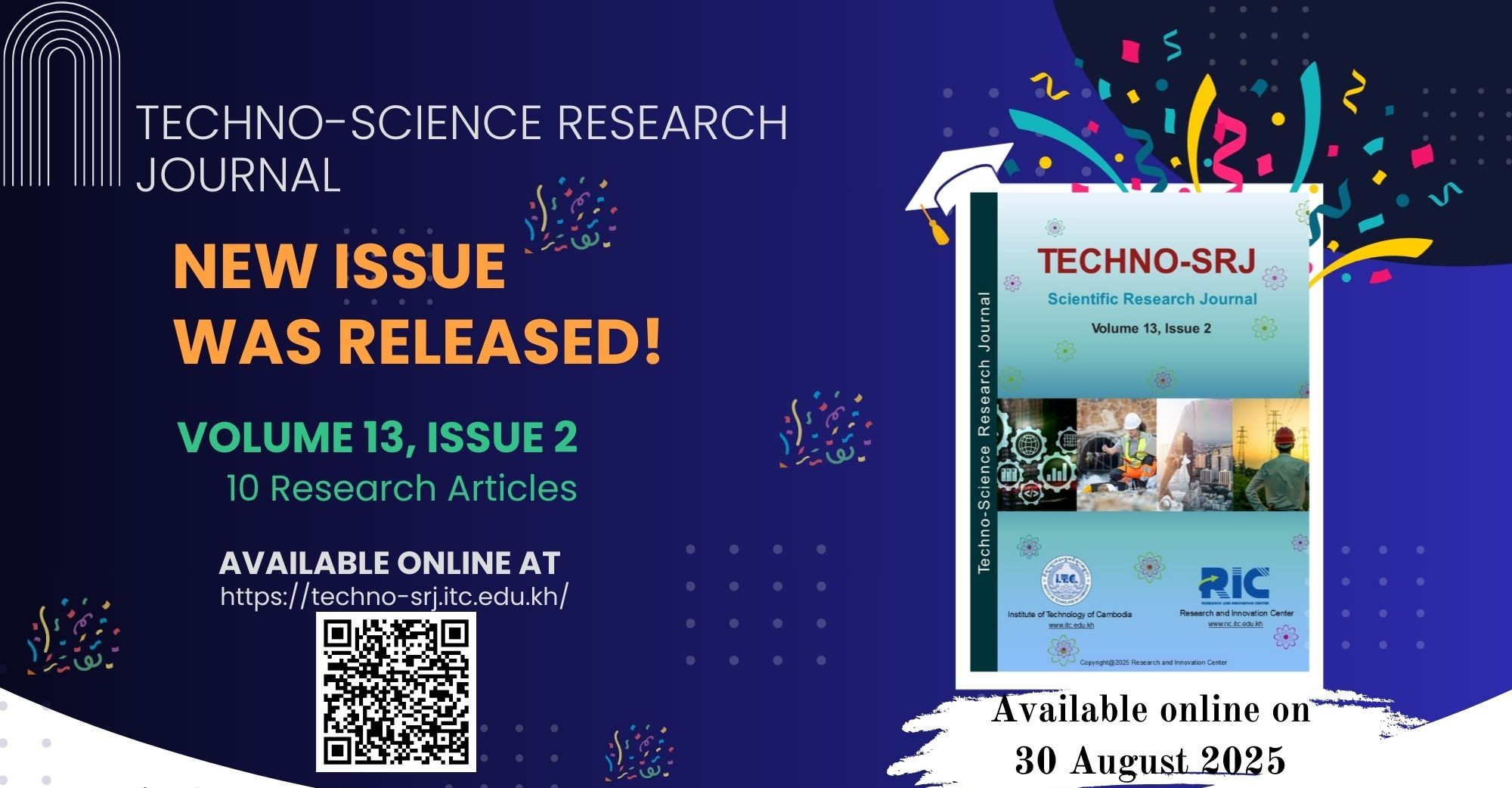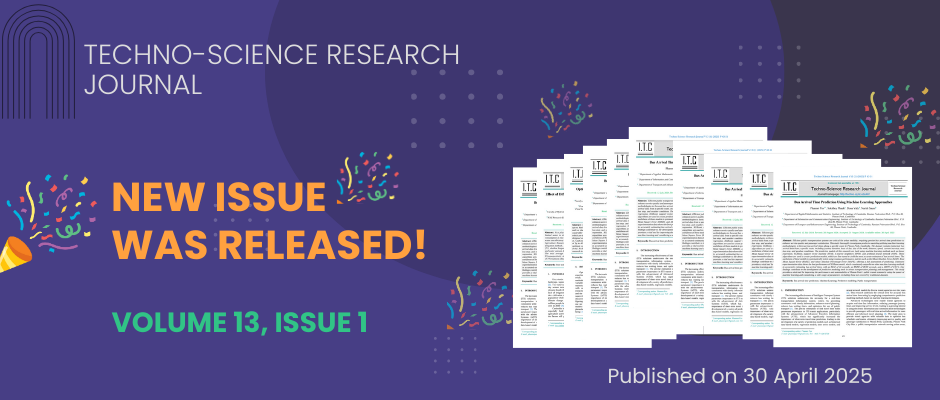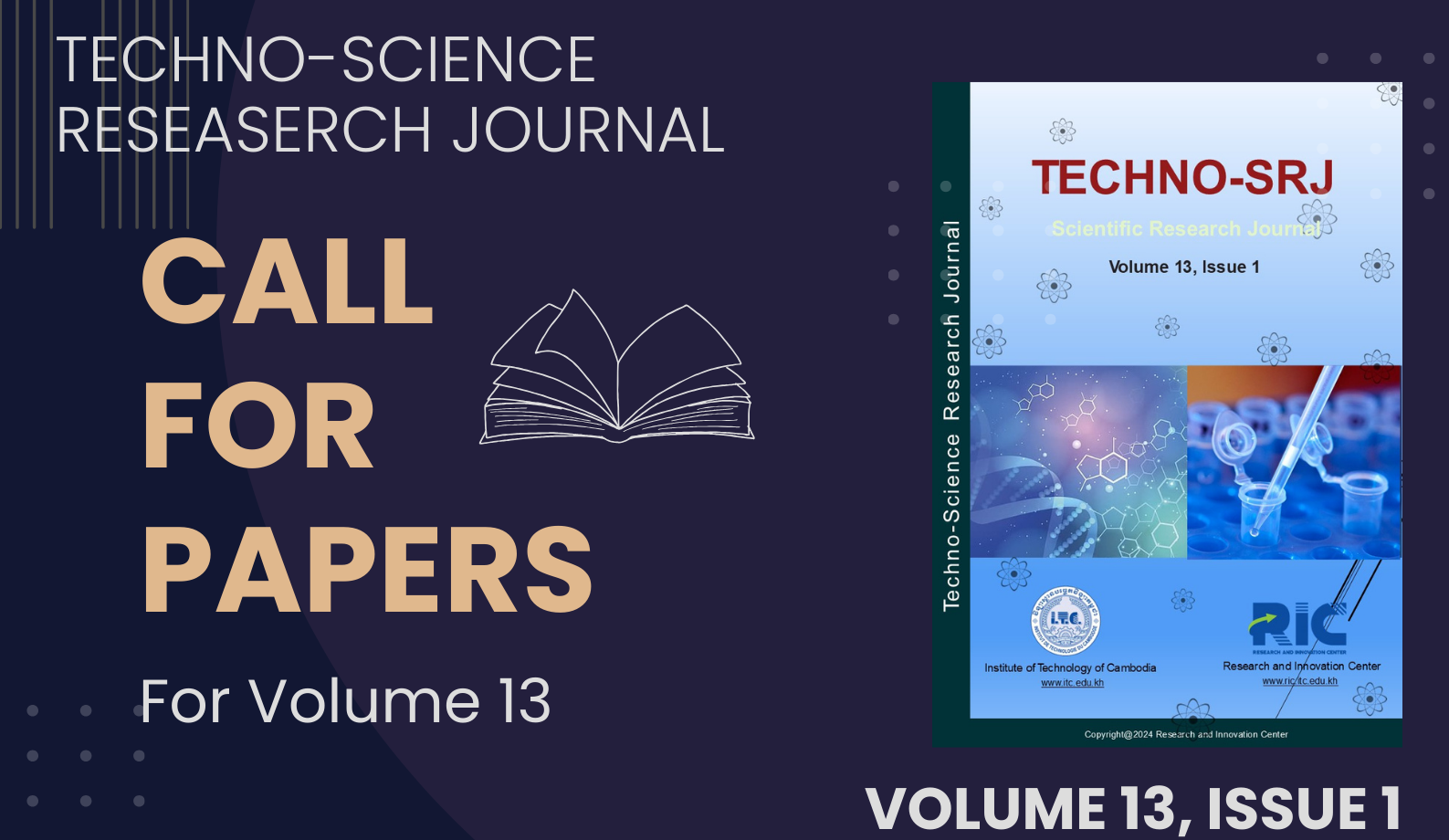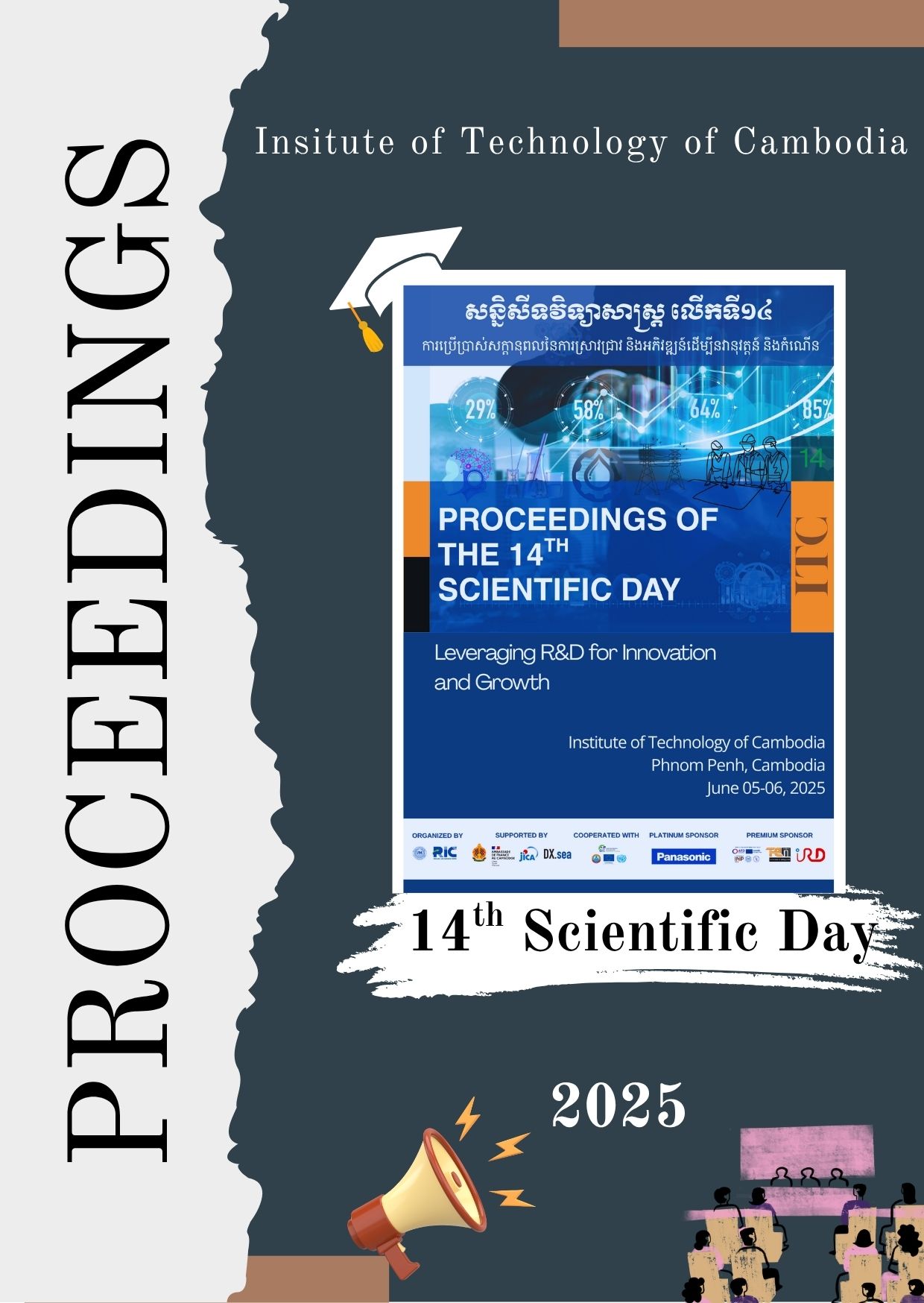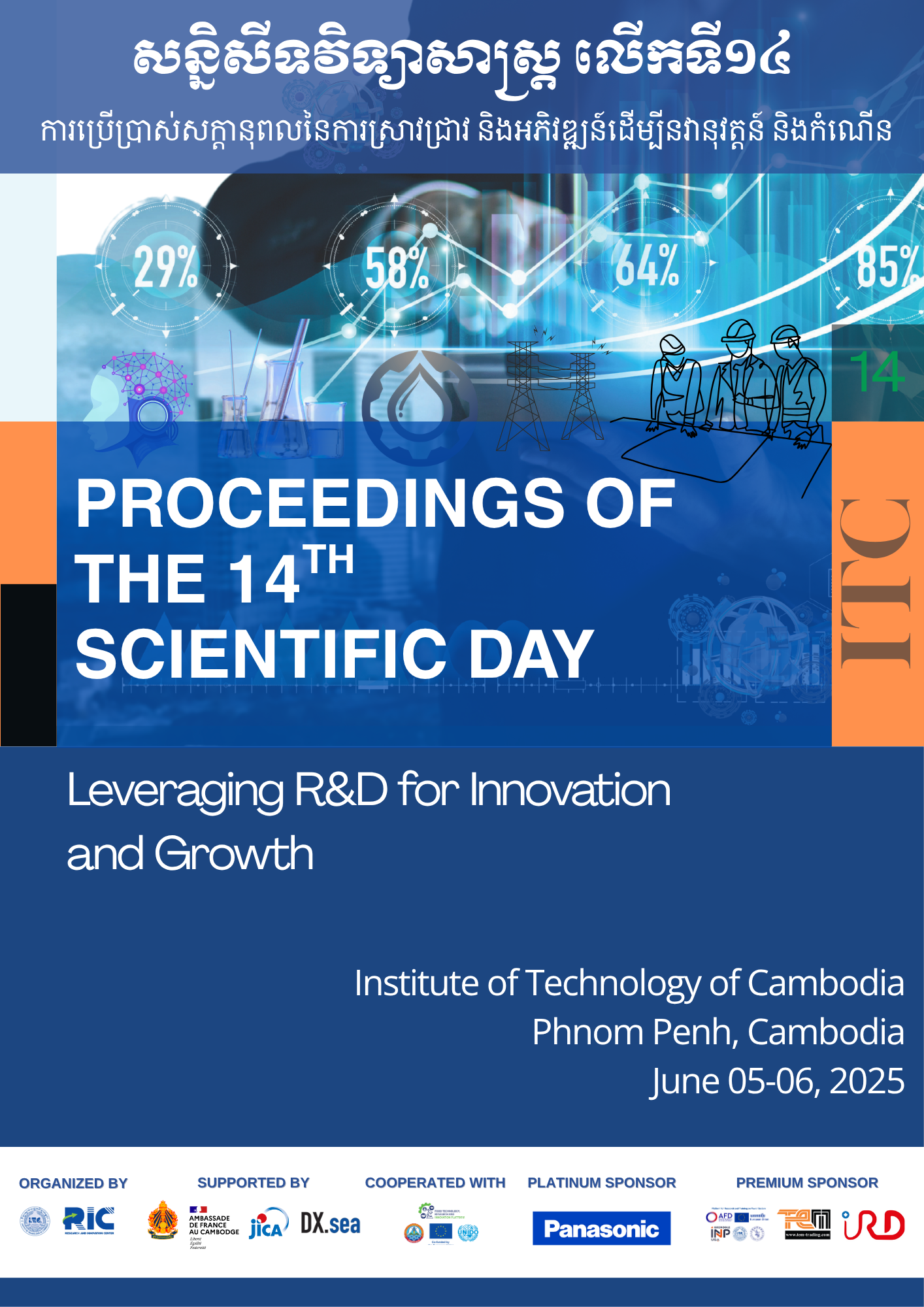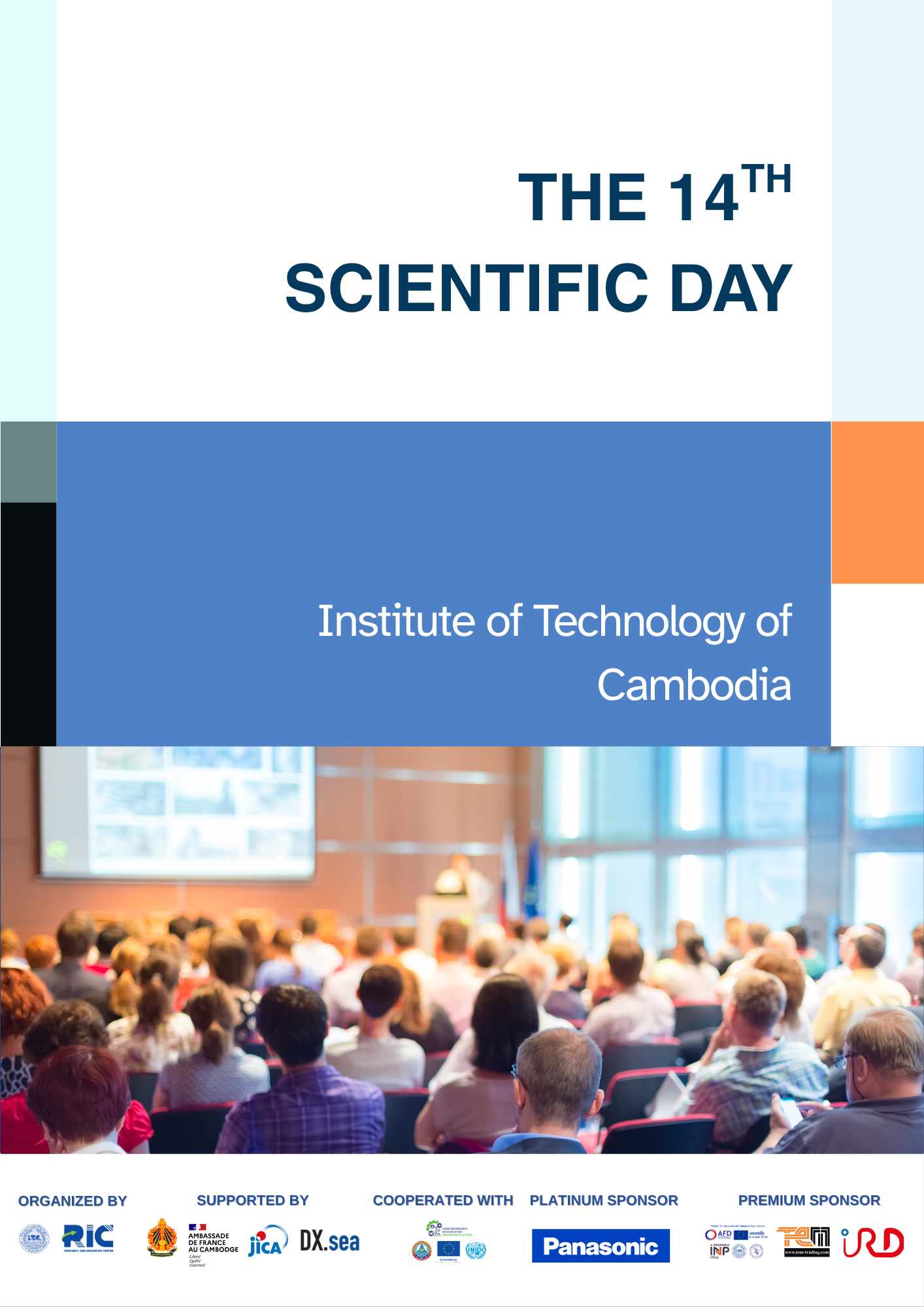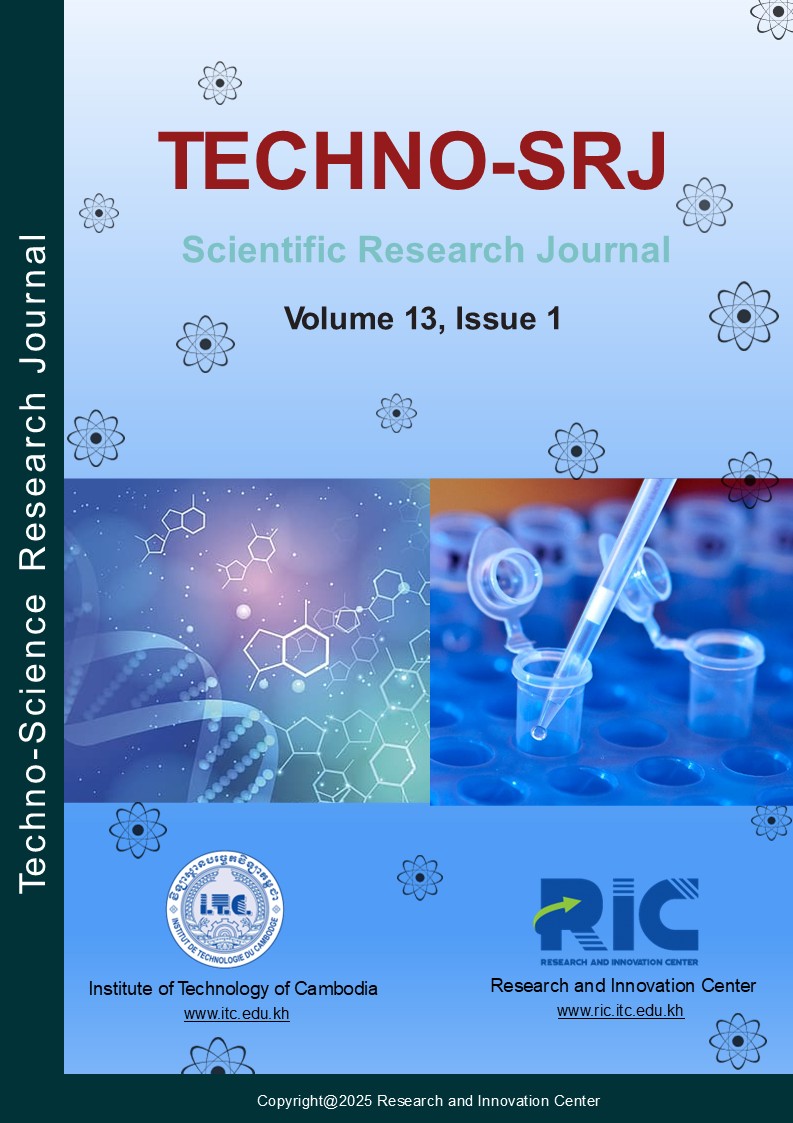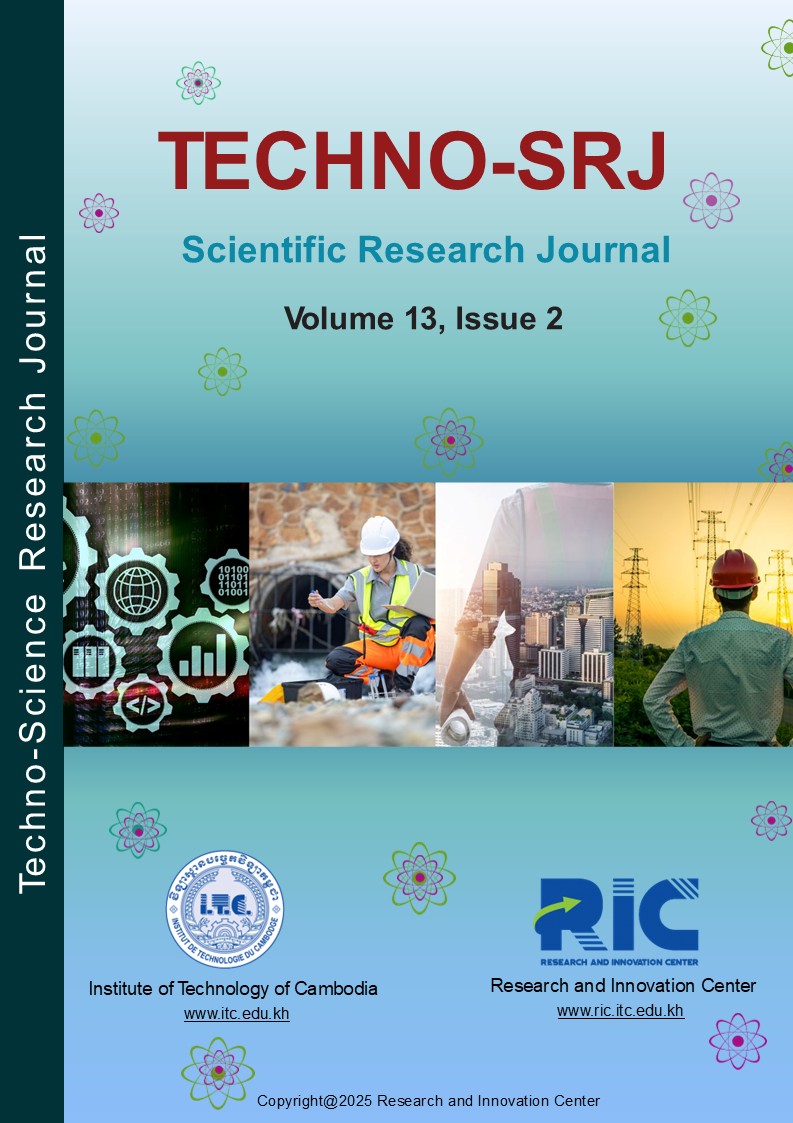Latest Issue
Empowering Education with Online Khmer Handwritten Text Recognition for Teaching and Learning Assistance
Published: August 30,2025Undergraduate Student Dropout Prediction with Class Balancing Techniques
Published: August 30,2025Status of Seawater Quality at Koh Rong Island, Sihanoukville, Cambodia
Published: August 30,2025Low-Complexity Detection of Primary Synchronization Signal for 5G New Radio Terrestrial Cellular System
Published: August 30,2025Word Spotting on Khmer Printed Documents
Published: August 30,2025Tuning Hyperparameters Learning Rate and Gamma in Gym Environment Inverted Pendulum
Published: August 30,2025Examining Passenger Loyalty in Phnom Penh Public Bus System: A Structural Equation Modelling Approach
Published: August 30,2025Prediction on Load model for future load profile of Electric Vehicle charging demand in Phnom Penh
Published: August 30,2025Economic Study on Integrating PV-DG with Grid-Tie: Case Study in Cambodia
Published: August 30,2025Recent Articles
Fiber Reinforced Polymer (FRP) is a popular technique that is used to strengthen and repair existing structural elements due to its high strength to weight ratio, fatigue resistance, non-corrosiveness and ease of handling and application at the site. The objective of this research is to study the effect of reinforced concrete (RC) beam and column externally strengthened with glass fiber reinforced polymer (GFRP) sheets after exposing to cyclic we
This work proposes an effective and efficient use of energy supply for a Vertical Take-Off and Landing Unmanned Aerial Vehicle (VTOL UAV). Because of low power consumption, a 2-DOF parallel mechanism is used as dual axis solar tracker, and mounted on a UAV. Then, the UAV becomes a multi rigid-body UAV which has loops of connected links. Dynamic modeling for the system is one of the most challenging engineering problems. To deal with it, kinematic
Water is fundamental to all aspects of human and economic development, so protecting riverine ecosystem is vital. Environmental flow assessment is widely applied to describe how much a river ecosystem changes with alterations to its natural flow regime. This study aimes to assess the environmental flow of Stung Chinit basin, one among the 12 tributaries contributing to Tonle Sap Great Lake, caused by the changes in river flow regimes under future
Phnom Penh, the capital city of Cambodia, has had a rapid increase in urbanization in recent decades. As impervious area increases, urban runoff becomes an increasingly more important component of urban non-point pollution. Boeng Trabek catchment is highly susceptible to flash flooding during heavy storm events. This study evaluates the relationship between the peak discharge and water quality, and assess the impact of land use scenarios on urban
Report of UNICEF, 2009 has shown that region along Mekong River in Cambodia has arsenic (As) pollution in groundwater. The major cause of As pollution was attributed to natural process such as the dissolution of As-containing minerals and anthropogenic activities such as percolation of water from mining waste. Cambodia has been recorded a higher concentration of arsenic in groundwater of several provinces including Kandal, Kampong Cham, Prey Veng
Cambodia is lack of surface water in the dry season for serving the need of people in rural area. Another potential source of water may be groundwater, a supplement source to rainwater and surface water for additional irrigation of the wet season and dry season crop. It probably serves the needs of most of the rural and urban population. Being an integral part of the hydrological cycle, its availability depends on the rainfall and recharge condit
As a consequence of the global warming effects on rainfall changes such as droughts, hail storm or flash flood, data sets of highest daily rainfall for the period (1981-2010) were used for calculating the statistical distribution of extreme monthly rainfall in tributary of Tonle Sap Basin (Stung Chinit Catchment, Kampong Thom Province). The main objective of this paper is to develop the return period of rainfall and estimate depth of rainfall fro
The Internet of Things is considered as the next big technology revolution after the invention of the Internet. Data of IoT are very useful and could produce such huge creativity for us to build many useful applications in our daily life. In Cambodia, the IoT is still a new technology for research and development. However, Security and Privacy are the main key issues for IoT and they are still facing some enormous challenges such as DDoS Attack o
Glass, a fragile material that gains popularity in building construction, has been developed to sustain with high loads. This structural glass would not work effectively if the connection has not been able to transfer the loads properly. The study aims to optimize bolted connection of structural glass. We focus on the geometry optimization of the bolt to deal with heavy external loading that requires a strong connection. Numerical parametric stud
This study attempts to investigate size distribution of particulate matters emitted from medical waste burning and ambient air quality of a hopistal in a remote area of Cambodia. The particulate matters are mainly discussed in different size ranges of 0.1-10 µm, which was sampled by a nano-sampler on a single chamber incinerator (SCI) and a stella incinerator (SI). In addition, carbonaceous aerosols and gaseous pollutants were also included. The
E-mail Alert
Add your e-mail address to receive forthcoming issues of this journal




